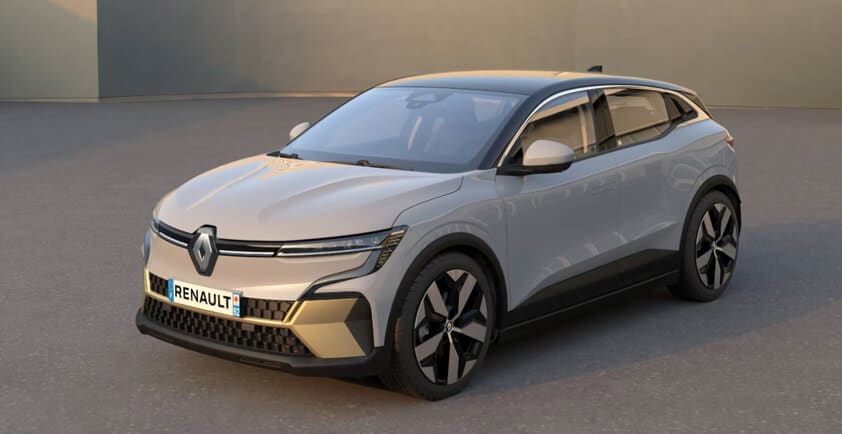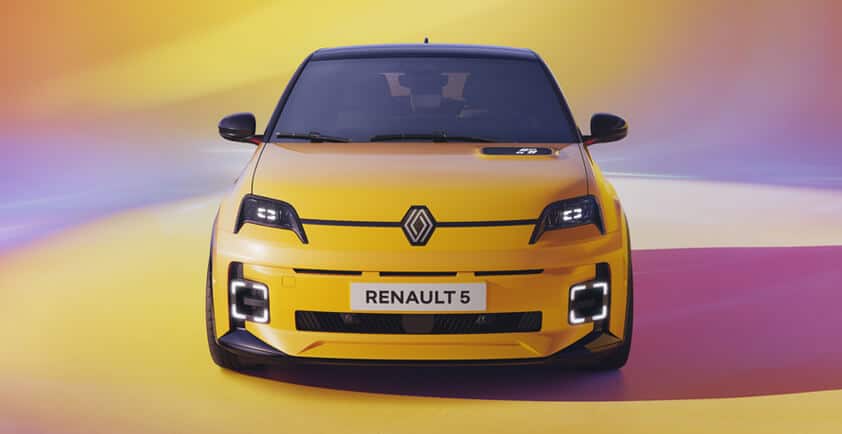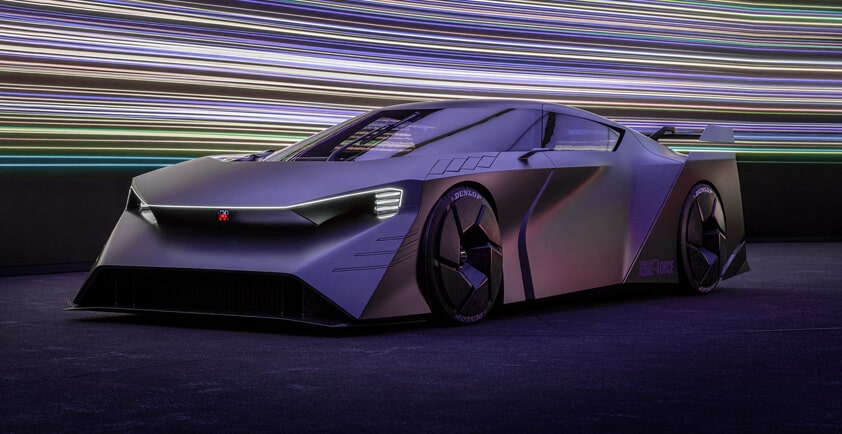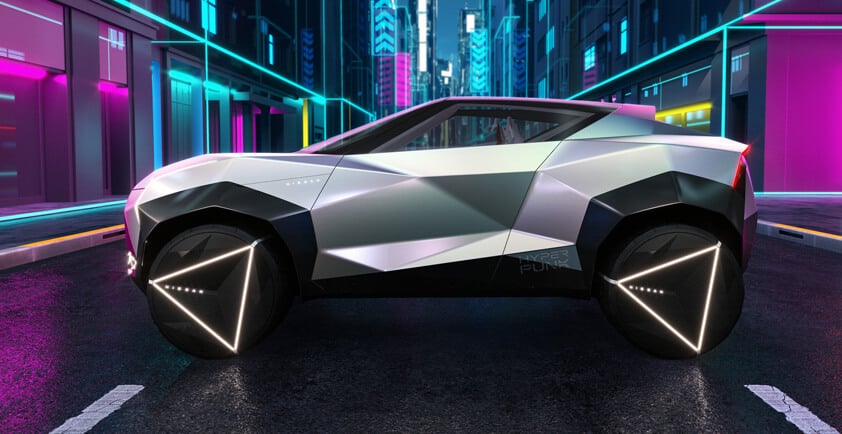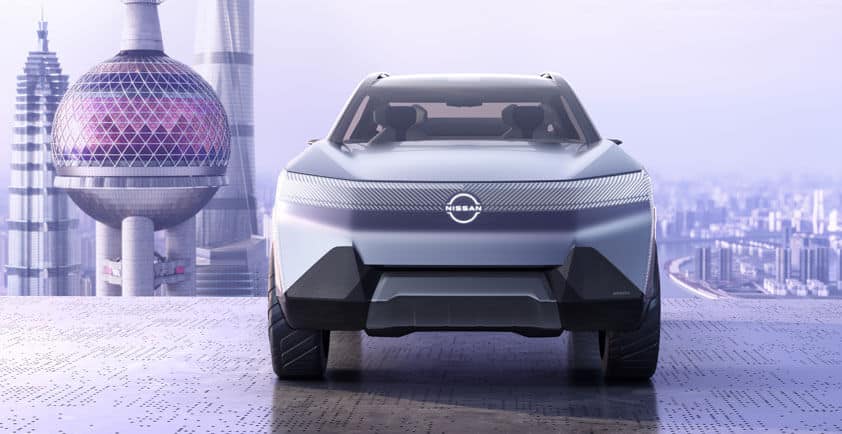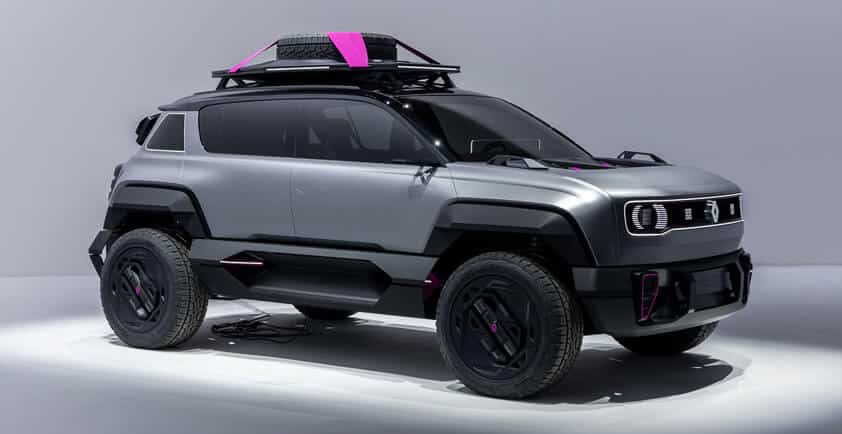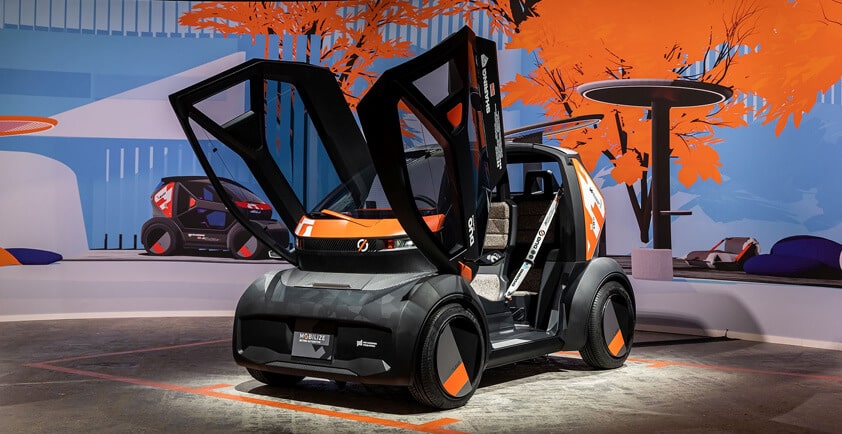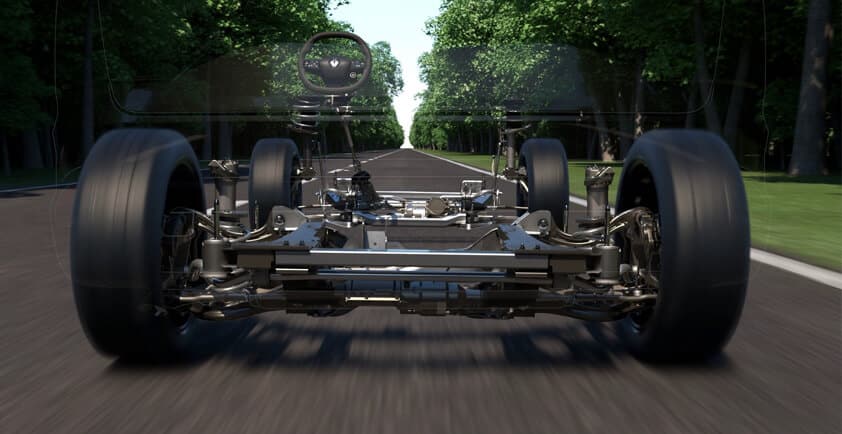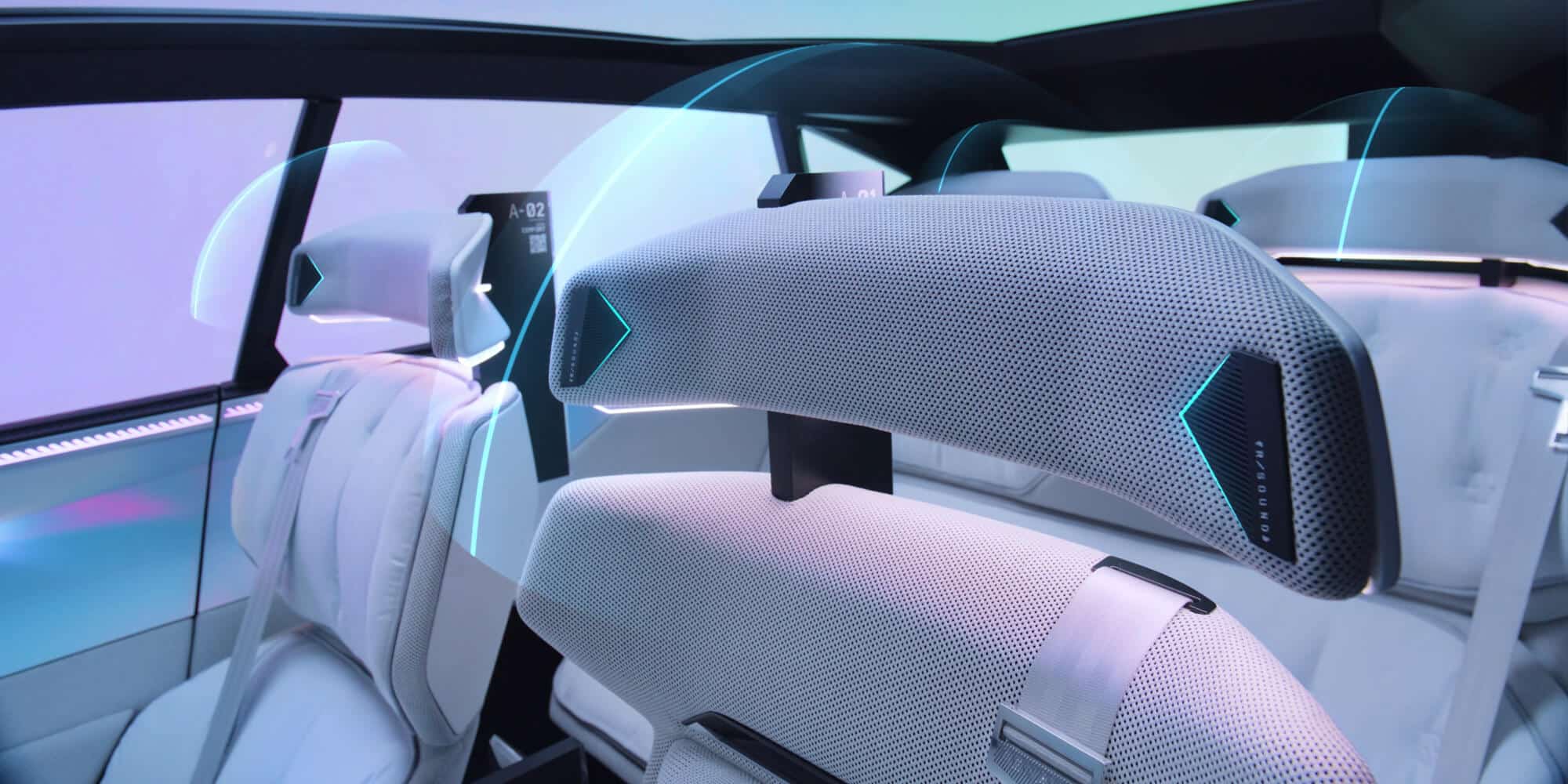
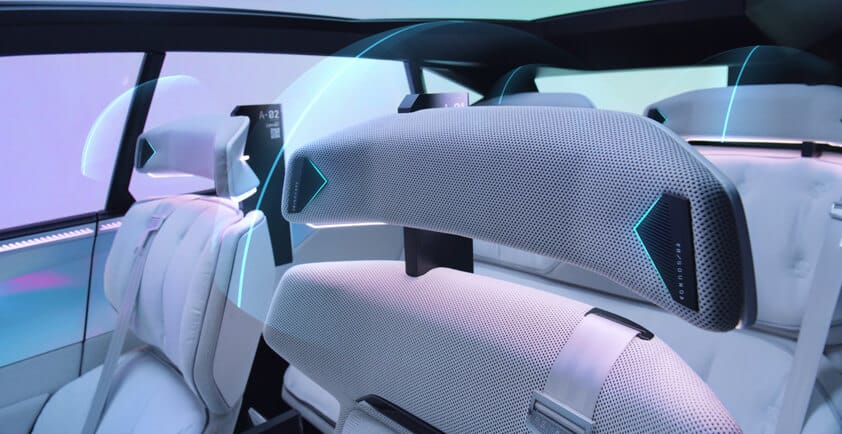
VIVATECH: RENAULT AND JEAN-MICHEL JARRE MAKE CARS A SPACE FOR UNIQUE SOUNDSCAPE EXPERIENCES
>> Renault and Jean-Michel Jarre join forces to outline the goals of their collaboration: make cars a space for unique soundscape experiences
Cars are great spaces in which you can create synergies between tech and the environment. Renault is a fast-changing car manufacturer and I truly wish to incorporate all my skills as a sound engineer into this world of myriad sound experiences.
Jean-Michel Jarre, artist and sound engineer
Jean-Michel Jarre joins Renault in engineering acoustics to develop the sound experience of the brand’s future electric models. Their collaboration revolves around three key areas.
‘Less is More’, the North Star for future cockpits
The ‘Less is More’ technology built into the Scénic Vision concept car reflects Renault’s ambition to design an excellent audio system using as few components as possible. A sustainable tech approach for the benefit of passengers and the on-board experience. This desire informed the soundscape design for the Scénic Vision, which has fewer speakers inside the car. An innovative audio system features mid-bass speakers located in each door with ‘sound bubbles’ installed in each head rest. Passengers thus benefit from augmented, immersive, high-quality acoustics that are specific to each passenger.
New sound signature designed by Jean-Michel Jarre
With electric vehicles booming, now is the time to rethink ‘sound’, both inside and outside. By entrusting Jean-Michel Jarre with the new sound signature of its electric models, Renault teams get to harness the artist’s full range of expertise and creativity. The sound signature covers a range of features: the welcome sequence when entering the vehicle, the entire audio system (components, location, algorithms), as well as the sound emitted by electric vehicles when running under 30 km/h to warn pedestrians (VSP: Vehicle Sound Pedestrian).
‘Sonic Road’, a patented Renault service for an enhanced sensory experience during the whole trip
Last of all, Jean-Michel Jarre will provide artistic insight for the very first algorithm of Renault’s innovative ‘Sonic Road’. This patented Renault service will provide passengers with the ideal soundtrack that draws on both the musical preferences of the driver and contextual information: places, landscapes, weather, or even time of the day. As a researcher and musician, Jean-Michel Jarre has devised a way of pairing contextual data detected by the car with musical content (music, podcasts, news…). A brand-new sensory experience for all passengers that will amplify the feeling of being fully immersed in the surrounding environment.
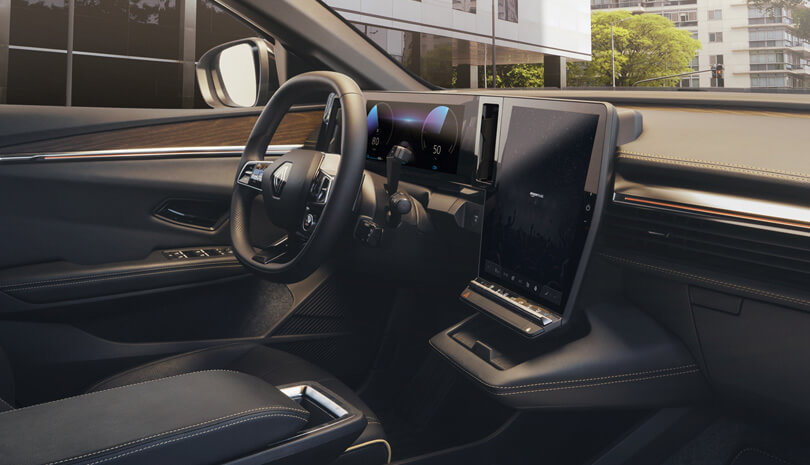
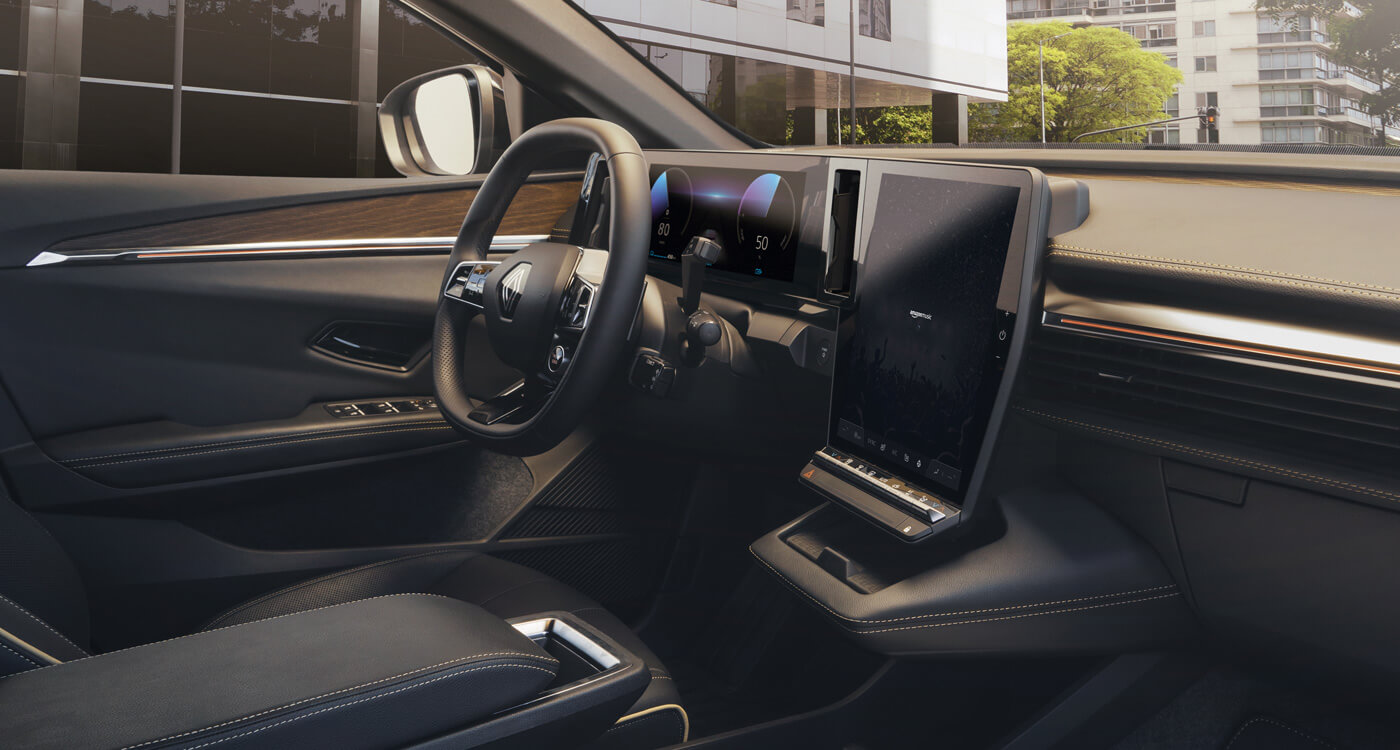
RENAULT NOW OFFERING AMAZON MUSIC TO CUSTOMERS IN THE CAR
>> A first collaboration inaugurated with nouvelle Megane E-Tech Electric
>> Customers on the go can experience an enriched music experience with the Amazon Music app
Coinciding with the launch of the Mégane E-Tech Electric and its new Connected Interface OpenR Link, Renault is joining with Amazon Music to offer a music experience in the manufacturer's vehicles.
Amazon Music is available with the OpenR Link interface
Together, Renault and Amazon Music are changing the way customers find and listen to music in a vehicle. For the first time, the Amazon Music app is available as a free download from My Renault Mobile application2. With Amazon Music, Prime members have access to ad-free listening of 2 million songs at no additional cost to their membership. Listeners can also enjoy the premium subscription service, Amazon Music Unlimited, which provides access to more than 90 million songs and the latest new releases. Customers also have free access to an ad-supported selection of top playlists and stations on Amazon Music.
With this collaboration, Renault and Amazon Music want to improve the customer experience by allowing them to enjoy millions of songs and thousands of playlists directly from the OpenR Link interface. Renault customers listening to Amazon Music Unlimited will also have access to a catalog of more than 90 million songs available in High Definition (HD).
Offer will be available on board the latest generation of Renault vehicles equipped with the OpenR Link system in Germany, Spain, Italy, France and the United Kingdom. The application, which will be available in all vehicles equipped with the OpenR Link system.
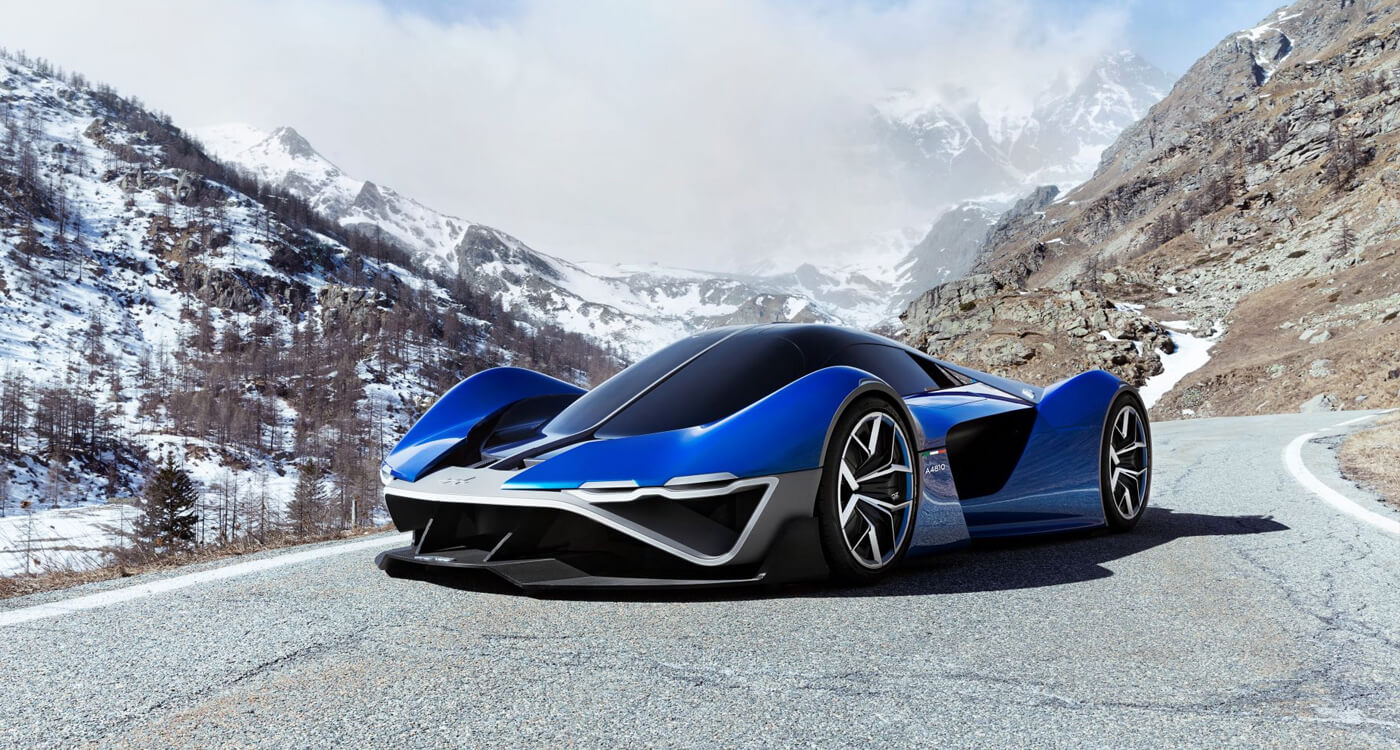
ALPINE AND IED TURIN: A WIN-WIN PARTNERSHIP THAT IS MORE THAN A CONCEPT-CAR
The A4810 Project by IED concept-car is the result of a collaborative project between Alpine and the Turin (Italy) campus of the Milan-based design school Istituto Europeo di Design. Raphaël Linari, Chief Designer at Alpine, recounts the partnership’s history and how the concept car went from idea to reality, highlighting the many benefits for both the school and the manufacturer, especially when it comes to unearthing new talent.
Interpret the design codes the Alpine brand and transpose them into the future by designing the 'super berlinette' of 2035. The two-seater supercar will have to be as sporty as it is environmentally friendly. It will be hydrogen-powered and must embody the spirit of Alpine cars: lightness, sportiness, driving pleasure. You have five months!
These were the instructions given to the twenty-eight master’s students from the Istituto Europeo di Design (IED) design school based in Turin (Italy), who started work on the project in September 2021. An enthralling project as not only did the students have to draw their futuristic concept-car on paper and then on computer, but they also had to life-size scale model of their design. As is the case every year when the school partners with a different car brand each time, the original goal was to present the final design at the Geneva Motor Show. Alas, the 2022 edition was called off – following a previous cancellation in 2021 – but that did not dishearten students from seeing their project through to the end. Hence, the A4810 Project by IED concept-car, the fruits of their labours, was unveiled late last week, during a press conference held at the school’s campus.
Let the creative juices flow
They are young men and women who go by the names Nicolas, Carlos, Abhijeet, Virginia, Sanjay, Valentino, or Faruk, who hail from countries around the world such as India, China, Italy, the United States, the Dominican Republic, China, Mali, Spain, and Taiwan. Under the close supervision of two professors and the patronage of Raphaël Linari, Chief Designer at Alpine – himself an IED alum – they took to the project with enthusiasm, with only a simple oral brief and no supporting documents. "I gave them what they needed to understand the brand, its design, and its legacy, but only very few constraints. They had to give free rein to their creativity, without feeling like their hands were tied," Raphaël explains.
The students set to work with without having to worry about any of the engineering or manufacturing aspects. Only the vehicle’s general dimensions (length, height, width, and wheel size) were given in advance. Raphaël describes the project in a rather visual manner:
The measurements are those of a supercar. They form a box within which the students had to place the driver, seats, powertrain, and overall shape of the vehicle.
In fact, why a supercar and not a classic sports car like the A110 or an endurance prototype like the A480? "We didn’t want to interfere with ongoing projects at Alpine, be they for the open-road or sports cars, all the while giving students the opportunity to take the brand to new heights. It became quickly obvious that ‘supercars’ was the best theme," explains Raphaël who also adds that Laurent Rossi, CEO of Alpine, was the one who wanted the concept-car to be hydrogen powered for an even more forward-looking take on the brand.
A truly professional selection process
In organising the project as such, Raphaël knew that he was asking students to share their vision of the Alpine brand and to show how they thought its stylistic language would change in the future. He was only half surprised to find that despite their multiple backgrounds, most of the students had given a very ‘Latin’ look to car. Nothing unusual for a cohort of students enrolled in an Italian school.
After each student having presented their initial thoughts, a stringent selection process took place. "I reviewed each and every drawing with the same management as you would expect in the world of professional design," explains Raphaël. "So, I made an initial shortlist of twelve proposals. Then Antony Villain, the Alpine Design Director, helped me whittle it down to just four. Lastly, Laurent Rossi joined the process as we chose two winning proposals."
The students were therefore given hands on experience of the sort of process they will encounter in their future careers as designers. Now, those whose designs were not selected still stayed on as part of the project. As Raphaël clarified, "The final design of the A4810 Project by IED is actually a mix of two main ideas that had come from the students. Those who had been eliminated at each step of the way then worked on various features of the final concept design such as the rims, seats, colour, materials, and more."
In search of tomorrow's talent
After theory comes practice; in other words, the students then had to turn make a physical copy of the concept-car. This phase involved a great deal of discussion between Raphaël Linari and IED students and professors, sometimes even late at night or on weekends. "It showed their mindset and level of commitment to the project," says Raphaël. "For my part, I spent my own personal time accompanying them throughout the project, but it was the least you could do in such a situation when you are ‘gifted’ a concept car that will boost brand visibility."
The students knuckled down and gave it their all, while their teachers called on their network of contacts to find people to help make the scale model (milling, modelling, painting, etc.), as well as suppliers for rims (OZ Racing) and tyres (Pirelli). "They used their ingenuity right to the end," notes Raphael. For him, there is no doubt in his mind: "They had a blast on this project; we could see they were having fun and that there was a positive energy in the group. It is evident in the final product, be it the drawings, the model, or even the photos."
This spectacular project is an example of how Alpine is also opening up to a new generation of designers. While the brand has a long tradition of partnering with schools, this particular partnership – with the real-life concept-car at the end – has shown Raphaël Linari and Antony Villain a whole new talent pool. "Alpine is a brand that has just been reborn and is looking to the future. Full of ambition, it upholds positive values, such as inclusion and diversity, that are important for new generations. This kind of partnership with schools and students is a real win-win strategy for all," says Raphaël enthusiastically.
Who knows! Maybe somewhere in the group of IED students who worked on the A4810 Project by IED concept car hides a designer who, come 2035, will be overseeing a real Alpine supercar...
Author Emmanuel Genty
